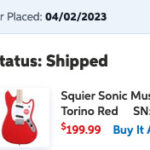Electric guitars have reigned supreme in the music world for decades, becoming synonymous with rock, blues, and countless other genres. For left-handed musicians, the journey to shredding on an electric guitar wasn’t always straightforward. Historically, lefties faced limitations, often having to adapt to right-handed instruments. However, the landscape has dramatically changed. Today, a plethora of outstanding electric guitar options cater specifically to left-handed players, empowering them to leave their unique mark on music.
Like many aspiring left-handed musicians, you might be inspired by iconic left-handed guitarists who defied norms and shaped music history. Legends like Paul McCartney, Jimi Hendrix, Kurt Cobain, and Dick Dale demonstrated that being left-handed is no barrier to musical greatness. They paved the way, proving that lefties can not only play but revolutionize the electric guitar.
The electric guitar is arguably the most recognizable and impactful instrument in popular music. From stadium stages to recording studios, its distinctive sound defines countless songs. Whether you’re a complete beginner picking up your first guitar or a seasoned player ready to upgrade, there’s a perfect left-handed electric guitar waiting for you. Understanding the nuances of electric guitar design and construction is key to finding your ideal match.
Several factors contribute to an electric guitar’s unique character and playability. These include the body size and shape, neck profile, tonewoods, bridge type, and pickups. Different types of wood, for example, produce distinct tones. Premium guitars often utilize hardwoods like alder, maple, or mahogany, known for their resonant qualities. For beginners or students, guitars made from plywood or pine offer excellent durability.
The body style of an electric guitar also significantly impacts its sound and feel. Common body types include solid-body, hollow-body, and semi-hollow body. Solid-body guitars are favored in rock and heavier genres for their bright, powerful sound, sustain, and resistance to feedback at high volumes. Hollow-body and semi-hollow body guitars, on the other hand, are often preferred for genres like jazz and blues, offering warmer, more resonant tones suitable for acoustic and quieter settings.
The guitar neck is another crucial element. Neck size and profile influence playing comfort and ease. Smaller guitars often feature shorter necks, which can be advantageous for players with smaller hands, making them easier to handle. While most electric guitars come with six strings, options with seven, eight, or even twelve strings are available for experienced left-handed guitarists seeking to expand their sonic palette and performance capabilities.
Left-handed guitarists have made indelible contributions to the world of music, enriching its history with innovation and passion. Whether your ambition is to command a stage before roaring crowds or simply enjoy playing riffs at home with friends, a sensational left-handed electric guitar is out there, ready to amplify your musical journey.

